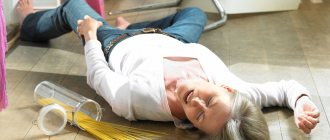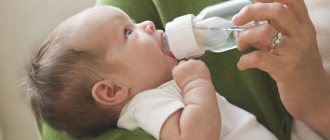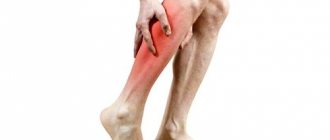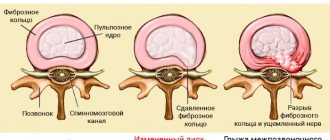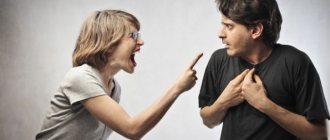Febrile seizures have been known since antiquity. Hippocrates wrote that febrile seizures most often occur in children in the first 7 years of life and much less frequently in older children and adults (1). Febrile seizures represent an important problem in pediatrics. The relevance of the problem of febrile seizures is determined, first of all, by their potential to transform into various benign and resistant epileptic syndromes, and also, in the case of a status course, often influence neuropsychic development.
Clinical practice shows that the diagnosis of “febrile seizures” is sometimes interpreted too generally, and doctors classify all seizures accompanied by high fever as febrile seizures. This leads to “missing” dangerous neuroinfections and inadequate prediction of febrile seizures.
Differential diagnosis between epilepsy and simple febrile seizures sometimes causes difficulties and depends more on the duration and observation of patients than on laboratory data (2) True AF should be distinguished from febrile-provoked seizures, which can be part of a number of forms of epilepsy (most often - the syndrome Drave).
Numerous studies worldwide have shown that the incidence of AF in the pediatric population averages 2–5% (3). An increased incidence of AF was noted in certain geographic regions. Thus, in Japan, AF occurs in 8.8% of children (4), in India - in 5.1–10.1%, and on the islands of Oceania - in 14% of the child population (3).
The typical age interval for the onset of AF is from 6 months. up to 5 years with a peak at 18–22 months of life. Febrile seizures are more common in boys (60% of cases) (5).
Clinical manifestations
The following factors are of utmost importance in the determination of AF: genetic predisposition, perinatal pathology of the central nervous system and hyperthermia. Most scientists agree that genetic factors play a leading role in the development of AF (6).
Many researchers (domestic and foreign) identify risk factors related to the subsequent development of epilepsy in children with febrile seizures:
- the presence of epilepsy or epileptic seizures in childhood in parents;
- neurological pathology in a child before the onset of febrile seizures;
- impaired mental function;
- focal seizures (predominance of seizures on any side of the body, head turns, facial distortion, etc.);
- prolonged convulsions (lasting more than 15 minutes);
- convulsions repeated within 24-48 hours;
- the presence of repeated febrile convulsions or other paroxysmal conditions (frequent shuddering in sleep, night terrors, sleepwalking, fainting, etc.);
- pathological changes in the electroencephalogram (EEG) that persist for more than 7 days after the attack;
- the child's age is less than 1 year or more than 5 years;
- the appearance of attacks when the temperature drops.
If there are 2 or more risk factors, long-term treatment with antiepileptic drugs is usually prescribed.
Dynamic observations of children who suffered single febrile seizures showed that the risk of a repeated febrile seizure is 30%, and epileptic seizures not associated with an increase in temperature are 2-5%. If the child was less than a year old, the risk of recurrent seizures increases to 50% (2).
The likelihood of epilepsy in the presence of 2 or more risk factors is much higher and can reach 25%.
The negative impact of febrile seizures on the neurological status and mental development of the child has not been proven. Of particular interest is the effect of febrile seizures on the subsequent development of epilepsy. There is evidence that febrile seizures can sometimes lead to “epileptization” of the brain. At the same time, importance is attached to the factor of oxygen starvation of brain cells - hypoxia, which occurs during seizures and leads to structural changes in the cells of the temporal regions of the brain with the subsequent formation of an epileptic focus (4).
In this regard, it seems extremely important to us, and many other scientists and fellow neurologists, to conduct at least a routine EEG after the first or repeated attack.
There is no generally accepted classification of febrile seizures. It is proposed to distinguish between typical (simple) and atypical (complex) AF (7) (Table 1). Typical (simple) AF accounts for 75% of all febrile seizures. In the vast majority of cases, simple AF goes away on its own with age, transforming into epilepsy in only 3–5% of cases, mainly in idiopathic focal forms (8; 5).
We propose the following, more complete, syndromic classification of febrile seizures.
- Typical (simple) febrile seizures.
- Atypical (complex) febrile seizures.
- Idiopathic epilepsy with febrile seizures plus.
- Febrile seizures at the onset of various epileptic syndromes.
- Hemiconvulsive seizures, hemiplegia, epilepsy syndrome (HHE syndrome).
- Destructive epileptic encephalopathy in school-age children (DESC syndrome).
Simple (typical) AF makes up the vast majority of all febrile attacks - up to 75% (7). They are characterized by the following characteristics: Age of debut from 6 months. up to 5 years. High percentage of familial cases of AF and idiopathic epilepsy among relatives of the proband. Seizures are usually generalized convulsive tonic-clonic; often associated with sleep.
The duration of attacks is less than 15 minutes, in most cases 1–3 minutes; the attacks stop on their own.
High probability of recurrence of AF. Occurs in neurologically healthy children. Epileptiform activity is not recorded on the EEG in the interictal period. There are no changes in the brain during neuroimaging. AF goes away on its own after reaching the age of 5 years.
Complex (atypical) AF is long-lasting, often focal and frequent AF. Atypical AF transforms into symptomatic focal epilepsy (usually paleocortical temporal epilepsy) in 15% of patients (10). In these cases, MRI examination often reveals sclerosis of the horn of Ammon. In patients with a history of resistant focal forms of epilepsy, atypical AF is often detected - up to 30% of cases (8). Below are the characteristic features of atypical AF.
- The age of debut ranges from several months to 6 years.
- Absence of familial cases of AF and epilepsy among relatives of the proband.
- Seizures are generalized tonic-clonic or secondary generalized (often with a predominance of a focal clonic component), less often focal motor (including hemiclonic) or automotor.
- The duration of attacks is more than 30 minutes; development of status epilepticus is possible. The occurrence of post-attack symptoms of prolapse (Todd's paresis, speech disorders, etc.) is common.
- High frequency of AF, often during the period of one febrile illness.
- The presence of focal neurological symptoms in the neurological status (for example, hemiparesis); delays in mental, motor or speech development.
- The presence of continued regional slowing in an EEG study, most often in one of the temporal leads.
- Detection of structural changes in the brain by neuroimaging (typically hippocampal sclerosis), which may not occur immediately after AF, but develop with age.
| Symptoms\Types of AF | Typical AF | Atypical AF |
| Age of debut | from 6 months up to 5 years | up to 1 year or after 5 years |
| Family history | Compounded with epilepsy and AF | Not burdened |
| Types of seizures | SHG | Focal motor, VGSP |
| Duration of attacks | The attacks are short. Most often < 15 min (usually 1-3 min) | The attacks are prolonged. More often > 15 min. Possible status epilepticus |
| Repeated attacks in one period of fever | Not typical | Characteristic |
| Seizure frequency | Low | High |
| Post-attack symptoms of prolapse | Not typical | Possible |
| Focal neurological symptoms | Not typical | Possible |
| Brain changes on neuroimaging | Not typical | Possible |
| Basic activity on EEG | Within the age norm | More often slowed down |
| Regional slowing on EEG | Not typical | Maybe |
| Epileptiform activity | Not typical. Possible in 2-3% of cases: DEPD or short diffuse peak-wave discharges | Possible. More often regional epileptiform activity |
| Risk of transformation to epilepsy | Short | High enough |
Treatment of an acute episode of febrile seizures
The first episode of febrile seizures inevitably raises a number of fundamental questions for both parents and clinicians. The most important of them are:
- Why did febrile seizures occur?
- What is their prognosis, i.e., the likelihood of recurrence, transformation into epilepsy?
- What is the impact on the child’s health, in particular on neuropsychological development?
- What are the tactics of therapy and prevention?
As a rule, young parents who encounter an acute episode of febrile seizures for the first time are psychologically unprepared, confused, and do not know what their actions should be.
When a diagnosis of “febrile convulsions” is made, the doctor’s initial task is to provide emergency assistance to the patient and conduct an explanatory conversation with parents on the possible nature of febrile convulsions and measures to prevent them.
Emergency care includes, first of all, ensuring the optimal position of the patient - on his side, with his head lowered slightly below the body. You should also provide the child with a certain comfort, access to fresh air, and free him from excess clothing. However, although the attack is provoked by high temperature, excessive hypothermia should also be avoided. Clinical experience shows that cold baths, rubbing with alcohol, and the use of fans do not provide a significant beneficial effect and sometimes cause discomfort, which negatively affects the course of paroxysms. This is due to the fact that a strong decrease in temperature can cause metabolic disturbances in the body, which contribute to a second wave of temperature reaction in response to infection.
Of the anticonvulsants, the most useful for the correction of febrile seizures is intravenous administration of diazepam (Valium) - 0.2-0.5 mg/kg, lorazepam (Ativan) - 0.005-0.20 mg/kg, phenobarbital - 10-20 mg/kg. In the case of status febrile seizures, intubation should be performed and oxygen should be given in doses. It is also necessary to administer a 5% dextrose solution.
Along with intensive therapy, already at the first episode of febrile seizures, it is very important to conduct an explanatory conversation with parents. The attention of parents should first of all be drawn to the benign course of febrile seizures in most cases (2-5% of outcomes in epilepsy, among which a considerable percentage of transformations into benign epileptic syndromes). That is, parents need to make it clear that the likelihood of transformation of febrile seizures into severe forms of epilepsy is generally low. At the same time, parents should know that the likelihood of developing a repeated paroxysm of febrile seizures is quite high, and it is quite realistic to predict it. It is almost impossible to completely exclude recurrence of febrile seizures. Therefore, it is necessary to teach parents first aid techniques (position of the patient with the head turned to one side, combating overheating, access to fresh air, drinking plenty of fluids, prescribing anticonvulsants recommended by the doctor), a strict definition of the situation - prolonged, more than 30 minutes, febrile convulsions, repeated, within short intervals, paroxysms, when specialized medical care is necessary.
Prognosis and preventive methods
The disease is treatable, so the prognosis is positive in most cases. The situation can develop according to two scenarios - complete recovery of the patient, or transition of the pathology to epilepsy. The prognosis is made taking into account the risk of recurrence of seizures in the future, the development of epilepsy, neurological and intellectual disorders.
In most cases, attacks do not recur after the age of six. Neurological disorders are determined by the frequency and type of attacks. The prognosis worsens in the case of frequently recurring seizures of an atypical form - mental disorders are observed (developmental delay, mental retardation), the likelihood of transition to epilepsy increases to 15%.
“What to do about febrile seizures” is a question often asked by concerned parents. Our Center’s specialists advise, first of all, not to panic. When the first symptoms appear, you should immediately seek medical help!
Diagnosis of febrile seizures
The diagnosis of AF is exclusively clinical: establishing the presence of epileptic seizures against the background of elevated body temperature in children under 6 years of age. The main difficulty that requires increased attention from doctors to this problem is the exclusion of other diseases (primarily intracranial infections), as well as HHE and DESC syndromes.
Most neurologists recommend hospitalization for the first episode of AF (9). It is necessary to carry out diagnostic measures to exclude neuroinfection (meningitis, encephalitis, brain abscess). It is known, for example, that herpetic encephalitis can debut with generalized convulsive attacks at high temperatures. The slightest doctor’s suspicion of a neuroinfection, as well as such signs as prolonged AF, serial attacks, comatose state of the patient, persistent hyperthermia to high levels, require a spinal puncture with cerebrospinal fluid analysis.
An EEG study, as well as long-term video-EEG monitoring with the inclusion of sleep, play a minor role in the diagnosis of febrile attacks themselves. At the same time, they are important for excluding epilepsy, especially studies over time. EEG examination in the interictal period with typical FS does not differ from the norm (8). Some authors note an increased frequency of detection of hypnagogic hypersynchronization, which is not a reliable criterion (5).
In atypical AF, continued regional slowing (usually in one of the temporal leads) may be detected (11). With febrile seizures plus syndrome, short diffuse discharges of peak wave activity in the background are often detected.
Diagnosis and treatment
Treatment of febrile seizures is prescribed after:
- collection of anamnestic data (the period of manifestation of the disease, the dynamics of development, the frequency of attacks, the possibility of hereditary predisposition are taken into account);
- primary examination;
- laboratory tests (urine and blood tests);
- spinal puncture (if an inflammatory disease of the brain is suspected);
- carrying out EEG, CT, MRI.
Primary care for febrile seizures is aimed at relieving the attack and hyperthermia with the help of non-steroidal anti-inflammatory drugs and tranquilizers. Procedures for wiping the body with cool or warm water (to normalize the temperature) and ventilating the room are also carried out.
Treatment of atypical forms of pathology involves the use of antiepileptic drugs, as well as drugs with anticonvulsant effects (barbiturates, some types of diuretics, valproate).
Approaches to the prevention of febrile seizures
The possibility of recurrence of febrile seizures, as well as the risk of their transformation into afebrile ones, determines the need to develop special tactics. In everyday practice, the doctor is faced with the choice of the following methodological techniques: long-term (3-5 years) therapy, intermittent therapy (during the probable risk of developing febrile seizures), refusal of any prophylaxis.
As a rule, prophylactic treatment with anticonvulsants is recommended only in cases where the child has a condition other than simple febrile seizures. In this case, there are recommendations:
- children with neurological impairment and developmental delay should be considered as candidates for prophylactic treatment with anticonvulsants;
- if the first febrile attack was complex (multiple, prolonged or focal convulsions) and after it there was a rapid and complete normalization of the child’s condition, treatment is not indicated, except in cases where a positive family history of non-febrile convulsive attacks has been established;
- a positive family history of simple febrile seizures serves as a relative contraindication to therapy in the above situations;
- Children with frequent and prolonged febrile seizures require treatment. (2)
conclusions
Dispensary observation of children who have suffered febrile convulsions is carried out by a pediatrician and a neurologist. The main tasks of specialists are the correct diagnosis of febrile seizures, conducting additional examinations, determining indications for hospitalization, treatment tactics and prevention of repeated febrile paroxysms. When the first attack of febrile seizures occurs, it is very important to classify them into simple and complex, which is of fundamental importance for the prognosis. In some cases, children with febrile seizures have to be hospitalized. Children who have had febrile seizures should be followed up by a neurologist: after 1 month. after an attack of febrile seizures, then 2 times a year. An electroencephalographic study is carried out after an attack of febrile seizures, then once a year.
Dispensary observation allows in many cases to avoid the recurrence of convulsive paroxysms, promptly exclude organic pathology of the central nervous system, and prevent the side effects of the anticonvulsant drugs used.
The most important task of a doctor, in addition to correctly establishing a diagnosis and prescribing adequate therapy, is to advise parents. The family's first reaction to a diagnosis of febrile seizures or seizure disorder is usually accompanied by a sense of grief and loss of a previously healthy child. The thought of febrile seizures turning into epilepsy, a condition that is never completely cured, can make a family miserable. When the first episode of febrile seizures occurs, the doctor should explain to the parents the rules of first aid, discuss the possible causes of the development of febrile seizures, the likelihood of recurrence of attacks, the possibility of “transition” of febrile seizures into epilepsy, emphasizing the relatively low (4%) degree of risk and favorable prognosis of febrile seizures.
Cooperation between the doctor and parents is the key to successful treatment and further development of the child. It is no coincidence that one of the founders of modern epileptology, Professor Lennox, wrote: “A good doctor deals not only with turbulent waves in the brain, but also with upset feelings, unbridled emotions, since a patient with epilepsy is not just a neuromuscular drug, he is, first of all, personality is an integrated combination of physical, mental, social and spiritual qualities. Neglect of each of them leads to deterioration and aggravation of the disease...”
References
- Ternkin O.The falling sicknes, a history of epilepsy from the Greeks to the beginning of modern neurology. Baltimore: John Hopkins Press 1924.
- Fenichel J.M. Pediatric neurology: Fundamentals of clinical diagnosis: Translated from English. — M.: OJSC “Publishing House “Medicine”, 2004 — 640 p.
- Hauser WA The prevalence and incidence of convulsive disorders in children // Epilepsia. - 1994. - V. 35 (Suppl 2). — P. 1–6.
- Tsuboi T. Prevalence and incidence of epilepsy in Tokyo // Epilepsia. - 1988. - V. 29 (2). — P. 103–110.
- Panayiotopoulos CP The epilepsies: Seizures, Syndromes and Management. - Bladon Medical Publishing, 2005. - 417 p.
- K.Yu. Mukhin, M.B. Mironov, A.F. Dolinina, A.S. Petrukhin, FEBRILE SEIZURES (LECTURE), Rus. zhur. det. neuro.: vol. V, issue. 2, 2010, p 17-30
- Baram TZ, Shinnar Sh. Febrile seizures. - Academic Press, Orlando, 2002. - 337 p.
- Mukhin K. Yu., Petrukhin A. S., Mironov M. B. Epileptic syndromes. Diagnostics and therapy (reference guide for doctors) // M.: System solutions, 2008. - 224 p.
- Badalyan L. O., Temin P. A., Mukhin K. Yu. Febrile seizures: diagnosis, treatment, follow-up // Methodological recommendations. - Moscow, 1988. - 24 p.
- Sadler RM The syndrome of mesial temporal lobe epilepsy with hippocampal sclerosis: clinical features and differential diagnosis // In: Advances in neurology. - V. 97. - Intractable epilepsies. Eds.: WT Blume / Lippincott, Philadelphia, 2006. - P. 27–37.
- Mukhin K. Yu., Petrukhin A. S. Idiopathic forms of epilepsy: systematics, diagnosis, therapy. - M.: Art-Business Center, 2000. - 320 p.
Pediatrician, doctor of the highest category, neurologist I. E. Tambiev. I. G. Kovalev.
What to do if you have seizures?
- Parents should not panic.
- Call an ambulance.
- Provide access to fresh air: open a window or window.
- Make it easier for your child to breathe by removing tight clothing.
- Do not restrain the child's movements.
- Place the child on a soft surface on his side so that if cramps trigger vomiting, the vomit does not enter the respiratory tract.
- Insert a clean handkerchief folded in several layers between the teeth to prevent the child from biting his tongue.
After the attack ends, try to reduce your body temperature. It is best to use suppositories with paracetamol for this, as well as physical cooling of the child: wiping with cold water, water with vinegar, a cold towel on the forehead. A sharp drop in temperature is undesirable because it can also trigger seizures.
Need for hospitalization
The doctor arrived, and the child was sleeping peacefully, and the initial examination did not cause much concern. However, the doctor suggests hospitalization. You should not refuse it: you need to make sure that it was the high temperature that provoked the convulsions, because there are many other reasons for them: viral encephalitis, meningitis, meningoencephalitis. These diseases can also begin with high fever and convulsions, and in order to exclude or identify them, you need to conduct an examination.
If it is not possible to go to the hospital, you must visit your local pediatrician or neurologist as soon as possible and follow all his instructions.
After the child recovers, he needs to be examined by a neurologist to rule out the possibility of epilepsy.
Expert: Svetlana Avdeeva, pediatrician Author: Olga Nikanorova
The material uses photographs belonging to shutterstock.com
How to help your child during a seizure?
First of all, don't panic. Act confidently and quickly. If your child's temperature rises suddenly, reduce it by all means.
We recommend trying wiping with water at room temperature. Use antipyretic rectal suppositories or wrap your child in a damp sheet. Keep your baby in light clothing, as warm clothes and blankets can raise the temperature further. Put your baby to your breast often and give him something to drink.
If febrile convulsions begin, try to keep the baby from falling, lay him on his side or on his tummy, tilt his head to the side - to prevent the tongue from sinking and choking on saliva.
Open the window, spray your face with water at room temperature, and use your little finger to gently press the “resuscitation point” - under the baby’s nasal septum. And call a doctor immediately!
After the seizures end, the baby may be lethargic and apathetic; this is a normal reaction.
